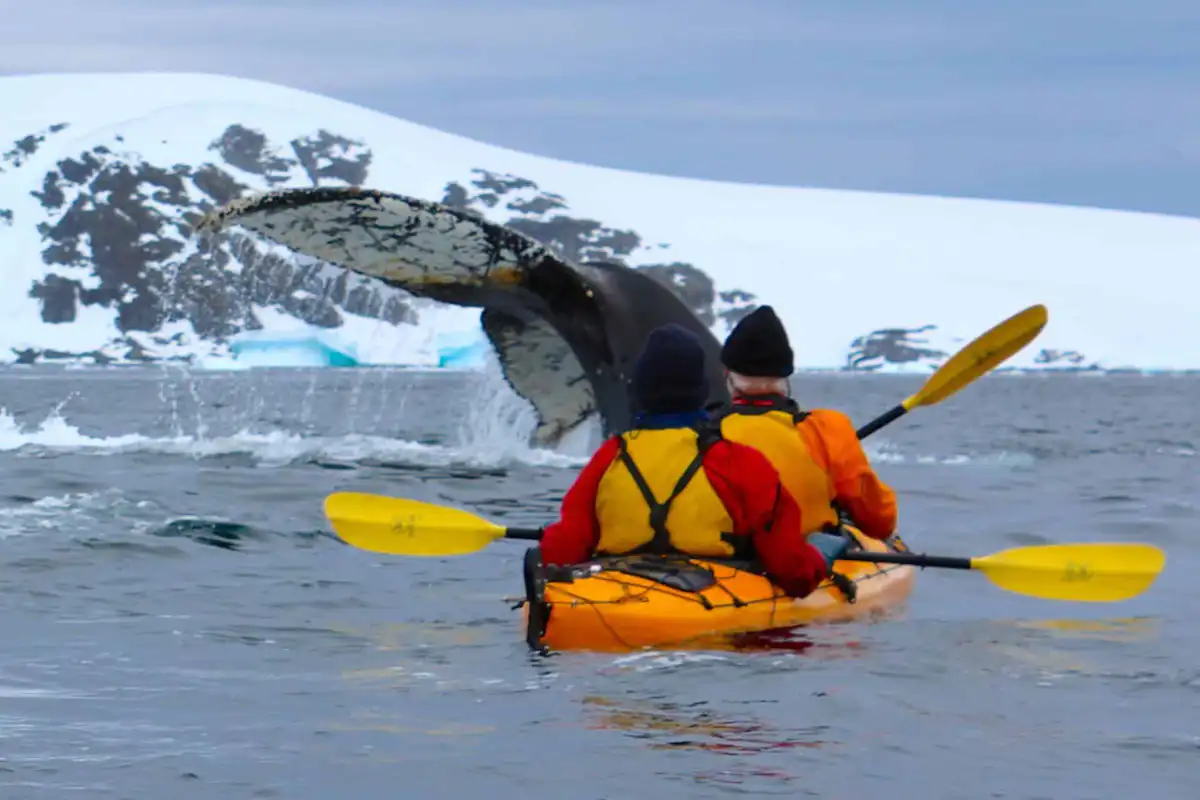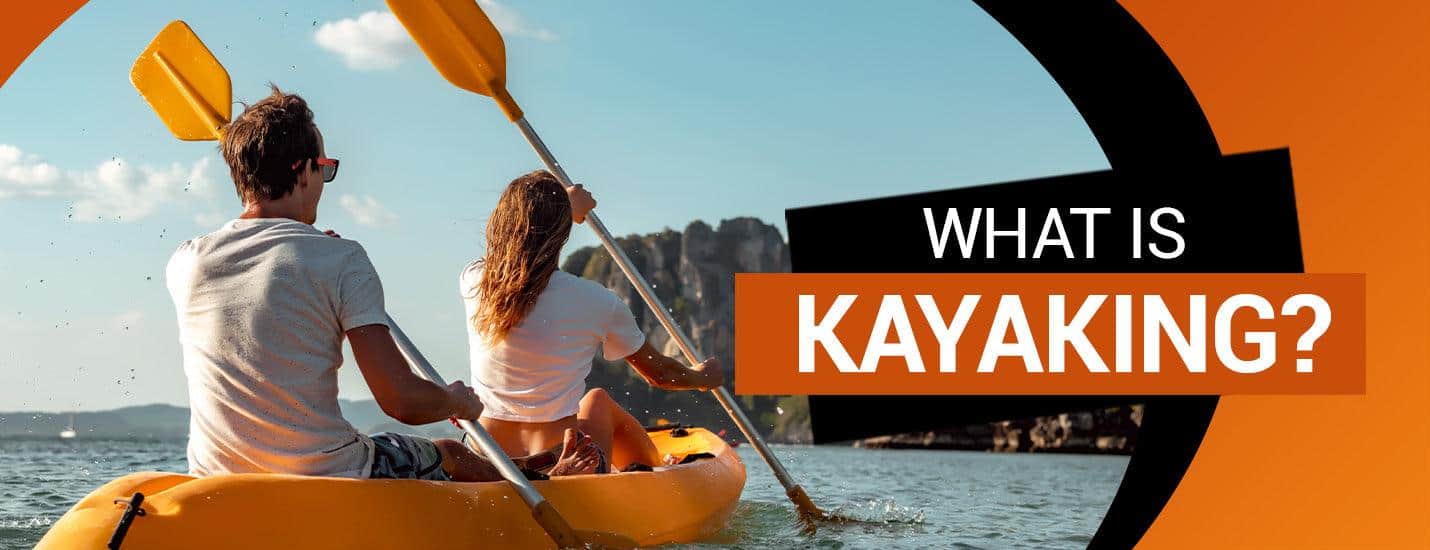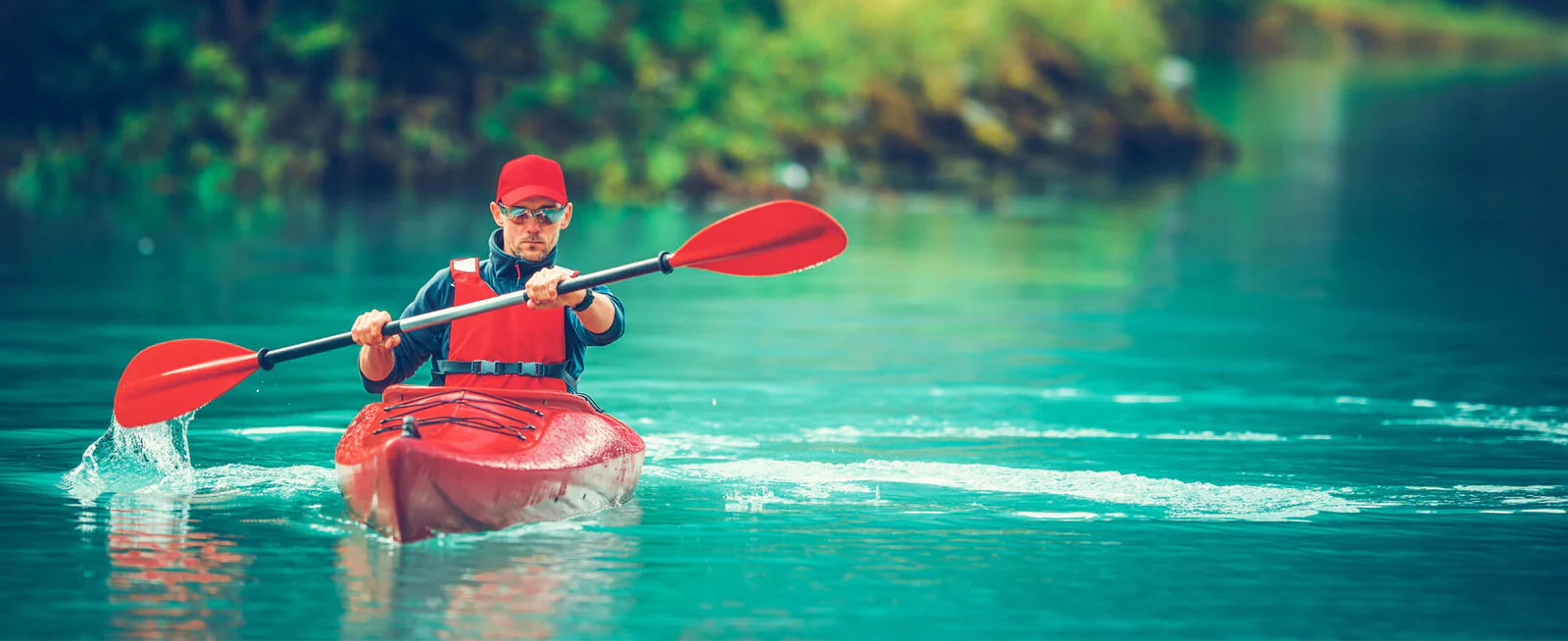What is kayaking? Kayaking is an exhilarating adventure sport that allows you to explore the beauty of nature while experiencing the thrill of navigating through water.
Whether you’re gliding down a calm river, paddling across a serene lake, or tackling the rapids of a roaring waterfall, kayaking offers a unique and exciting way to connect with the outdoors.
The sport has gained popularity in recent years, attracting people of all ages and skill levels. From beginners looking for a new hobby to experienced adventurers seeking an adrenaline rush, kayaking has something to offer everyone.
Kayaking Basics: What You Need to Know Before You Go
Before embarking on your kayaking adventure, it’s important to familiarize yourself with the essential equipment and gear needed for a safe and enjoyable experience. The most basic equipment includes a kayak, paddle, and personal flotation device (PFD).
There are different types of kayaks available, each designed for specific purposes. Sit-in kayaks are enclosed and provide better protection from the elements, while sit-on-top kayaks are open and offer more freedom of movement.
Inflatable kayaks are portable and easy to transport, making them a popular choice for those who want to kayak on different bodies of water. Touring kayaks are longer and narrower, designed for longer trips and expeditions.
Choosing the right paddle is also crucial for a comfortable and efficient paddling experience. Paddles come in various lengths and materials, such as aluminum, fiberglass, or carbon fiber. It’s important to choose a paddle that suits your height and paddling style.
For beginners, learning how to paddle and maneuver a kayak can seem daunting at first. However, with some practice and guidance, it becomes second nature. The key is to use proper technique and body positioning.
To paddle efficiently, hold the paddle with both hands shoulder-width apart and rotate your torso as you pull the paddle through the water. Use your core muscles rather than just your arms to generate power. To turn the kayak, use a sweep stroke by extending the paddle out to the side and sweeping it in a wide arc towards the stern or bow of the kayak.
Choosing the Right Kayak: A Guide to Different Types and Styles
When it comes to choosing the right kayak, there are several factors to consider, including your skill level, intended use, and personal preferences. The different types of kayaks available cater to various needs and environments.
Sit-in kayaks are a popular choice for those who want more protection from the elements. They have an enclosed cockpit, which helps keep you dry and warm in colder weather. Sit-in kayaks also offer better maneuverability and control, making them ideal for navigating through narrow waterways or rougher conditions. However, they can be more challenging to enter and exit compared to sit-on-top kayaks.
Sit-on-top kayaks, on the other hand, are open and provide more freedom of movement. They are easier to get in and out of, making them a great option for beginners or those who want a more relaxed paddling experience. Sit-on-top kayaks are also self-bailing, meaning any water that enters the kayak will drain out through scupper holes. This makes them suitable for recreational paddling in calm waters or for fishing.
Inflatable kayaks have gained popularity in recent years due to their portability and ease of use. They are made from durable materials that can withstand punctures and abrasions. Inflatable kayaks are lightweight and can be easily transported in a backpack or car trunk. They are a great option for those who want to explore different bodies of water or travel with their kayak.
Touring kayaks are designed for longer trips and expeditions. They are longer and narrower than recreational kayaks, which allows for better tracking and speed. Touring kayaks also have more storage space for gear and supplies. They are ideal for those who want to explore larger bodies of water, such as lakes or coastal areas.
When choosing a kayak, it’s important to consider your skill level and intended use. If you’re a beginner or plan to kayak in calm waters, a recreational kayak or sit-on-top kayak may be the best option. If you’re an experienced paddler or plan to go on longer trips, a touring kayak may be more suitable. It’s also important to try out different kayaks before making a purchase to ensure a proper fit and comfort.
Safety First: Tips for Staying Safe on the Water
Safety should always be a top priority when kayaking. While it’s an exciting and adventurous sport, there are inherent risks involved, especially when paddling in unfamiliar waters or challenging conditions. Here are some tips to help you stay safe on the water:
1. Wear a life jacket: Always wear a properly fitting personal flotation device (PFD) when kayaking. A PFD will keep you afloat in case of an accident or capsize. Make sure the PFD is approved by the appropriate authorities and is in good condition.
2. Check weather conditions: Before heading out, check the weather forecast and be aware of any potential changes or hazards. Avoid kayaking in severe weather conditions, such as strong winds, thunderstorms, or heavy rain.
3. Know your limits: Be honest with yourself about your skill level and physical abilities. Don’t attempt to paddle in conditions that are beyond your capabilities. Start with calm waters and gradually progress to more challenging environments as you gain experience.
4. Learn basic rescue techniques: Familiarize yourself with basic rescue techniques, such as how to re-enter your kayak after capsizing or how to assist others in need. Taking a kayaking course or joining a local paddling club can provide valuable training and knowledge.
5. Stay hydrated and protect yourself from the sun: Bring plenty of water and stay hydrated throughout your kayaking trip. Wear sunscreen, a hat, and sunglasses to protect yourself from the sun’s harmful rays.
6. Avoid alcohol and drugs: Never kayak under the influence of alcohol or drugs. They impair your judgment, coordination, and reaction time, increasing the risk of accidents or injuries.
By following these safety tips and using common sense, you can minimize the risks associated with kayaking and ensure a safe and enjoyable experience on the water.
Exploring Nature: The Benefits of Kayaking for Your Health and Well-Being
Kayaking not only provides an exciting adventure but also offers numerous health benefits for your physical and mental well-being. Here are some ways in which kayaking can improve your health:
1. Cardiovascular fitness: Kayaking is a great cardiovascular exercise that gets your heart pumping and improves your overall fitness. Paddling engages your upper body muscles, including your arms, shoulders, back, and core. It also increases your heart rate, helping to strengthen your cardiovascular system.
2. Strength and endurance: Regular kayaking can help build strength and endurance in your upper body muscles. The repetitive motion of paddling works your arms, shoulders, and back, helping to tone and strengthen these muscles over time.
3. Weight loss: Kayaking is a calorie-burning activity that can aid in weight loss or weight management. Paddling at a moderate intensity can burn up to 400 calories per hour, depending on your weight and effort level.
4. Stress reduction: Being out on the water surrounded by nature has a calming effect on the mind and body. Kayaking allows you to disconnect from the stresses of daily life and immerse yourself in the present moment. The rhythmic motion of paddling combined with the soothing sounds of water can help reduce stress and promote relaxation.
5. Mental well-being: Kayaking provides a sense of adventure and accomplishment, boosting your mood and self-confidence. It allows you to connect with nature and experience the beauty of the outdoors, which can have a positive impact on your mental well-being.
6. Vitamin D exposure: Spending time outdoors while kayaking exposes you to natural sunlight, which is a primary source of vitamin D. Vitamin D is essential for bone health, immune function, and overall well-being.
In addition to these physical and mental health benefits, kayaking also offers a sense of adventure and exploration. It allows you to discover new places, observe wildlife, and connect with nature in a unique way. Whether you’re paddling through calm waters or tackling challenging rapids, kayaking provides an exhilarating experience that can leave you feeling refreshed and invigorated.
Adventure Awaits: Top Kayaking Destinations Across the Globe
One of the great things about kayaking is that it can be enjoyed in various locations around the world. From tranquil lakes to rushing rivers and vast oceans, there are countless destinations that offer unique kayaking experiences. Here are some of the top kayaking destinations across the globe:
1. Lake Tahoe, United States: Located on the border of California and Nevada, Lake Tahoe is known for its crystal-clear waters and stunning mountain scenery. Kayakers can explore the lake’s secluded coves, paddle along its sandy beaches, or venture out to the iconic Emerald Bay.
2. Milford Sound, New Zealand: Nestled within Fiordland National Park on New Zealand’s South Island, Milford Sound is a breathtaking fjord known for its dramatic landscapes and abundant wildlife. Kayakers can paddle through towering cliffs, cascading waterfalls, and spot seals, dolphins, and penguins along the way.
3. Halong Bay, Vietnam: Halong Bay is a UNESCO World Heritage Site renowned for its emerald waters and limestone karsts. Kayakers can navigate through the bay’s maze-like channels, explore hidden caves, and camp on secluded beaches.
4. Abel Tasman National Park, New Zealand: Located on New Zealand’s South Island, Abel Tasman National Park is known for its golden beaches, turquoise waters, and lush forests. Kayakers can paddle along the park’s coastline, visit secluded bays, and spot seals, dolphins, and native bird species.
5. Sea of Cortez, Mexico: The Sea of Cortez is a biodiverse marine ecosystem located between the Baja Peninsula and mainland Mexico. Kayakers can explore its pristine waters, encounter marine life such as whales and sea turtles, and camp on remote islands.
6. Stockholm Archipelago, Sweden: The Stockholm Archipelago consists of thousands of islands and islets scattered along the Swedish coast. Kayakers can navigate through its calm waters, explore uninhabited islands, and experience the unique Scandinavian wilderness.
These are just a few examples of the many incredible kayaking destinations around the world. Each location offers its own unique beauty and adventure, making kayaking a truly global sport that can be enjoyed by people of all ages and skill levels.
Wildlife Encounters: Getting Up Close and Personal with Nature
One of the most exciting aspects of kayaking is the opportunity to get up close and personal with wildlife in their natural habitats. Whether you’re paddling through a serene lake or exploring a remote river, kayaking allows you to observe wildlife in a non-intrusive way. Here are some tips for safely observing wildlife while kayaking:
1. Keep your distance: It’s important to maintain a safe distance from wildlife to avoid disturbing or stressing them. Use binoculars or a zoom lens to get a closer look without getting too close.
2. Respect their space: Avoid approaching wildlife too closely or encroaching on their territory. Give them plenty of space and observe from a distance.
3. Stay quiet and still: Keep noise to a minimum and avoid sudden movements that could startle or scare wildlife. Be patient and allow them to approach you if they feel comfortable.
4. Avoid feeding or touching wildlife: Feeding wildlife can disrupt their natural behavior and create dependency on humans. It’s also important to never touch or handle wildlife, as it can cause stress or injury to the animal.
5. Observe from a distance: If you come across a nesting site or breeding area, maintain a safe distance and avoid disturbing the animals. Respect any signs or guidelines that are in place to protect wildlife.
By following these guidelines, you can enjoy the unique experience of observing wildlife while kayaking without causing harm or disturbance to the animals. Remember that the primary goal is to appreciate and respect nature’s beauty from a safe distance.
The Ultimate Challenge: Extreme Kayaking and White Water Rafting
For those seeking an adrenaline rush and the ultimate challenge, white water kayaking and rafting offer an exhilarating experience like no other. White water kayaking involves navigating through fast-moving rapids, drops, and obstacles in a kayak. It requires advanced paddling skills, quick reflexes, and the ability to read and react to changing water conditions.
White water kayaking is classified into different levels of difficulty based on the International Scale of River Difficulty (ISRD). Class I represents easy, slow-moving water with few obstacles, while Class VI represents extremely difficult and dangerous rapids that are only attempted by highly skilled paddlers.
White water rafting is another extreme sport that involves navigating through white water rapids in an inflatable raft with a team of paddlers. It offers a thrilling group experience that requires teamwork, communication, and physical strength.
Both white water kayaking and rafting require specialized equipment, including helmets, life jackets, and spray skirts. It’s important to receive proper training and guidance from experienced instructors before attempting these extreme sports. Taking a white water kayaking or rafting course will teach you the necessary skills, safety techniques, and rescue procedures to navigate through challenging rapids safely.
Kayaking with a Purpose: Conservation and Environmental Awareness
Kayaking provides a unique opportunity to connect with nature and develop a deeper appreciation for the environment. As kayakers, it’s important to be mindful of our impact on natural habitats and wildlife. Here are some ways in which kayakers can contribute to conservation and environmental awareness:
1. Leave no trace: Practice Leave No Trace principles by minimizing your impact on the environment. Pack out all trash, dispose of waste properly, and avoid disturbing or damaging natural features.
2. Respect wildlife and their habitats: Observe wildlife from a safe distance and avoid disturbing their natural behavior. Respect any guidelines or regulations that are in place to protect wildlife and their habitats.
3. Participate in clean-up efforts: Organize or participate in clean-up events to remove trash and debris from waterways. This helps keep the environment clean and protects wildlife from ingesting or becoming entangled in litter.
4. Support conservation organizations: Contribute to organizations that work towards the conservation of natural habitats, protection of wildlife, and preservation of waterways. These organizations often offer educational programs, research initiatives, and advocacy efforts.
5. Educate others: Share your knowledge and passion for the environment with others. Encourage responsible outdoor practices, raise awareness about environmental issues, and inspire others to take action. This can be done through various means such as giving presentations, organizing workshops or events, writing articles or blog posts, and using social media platforms to spread information.
By educating others, you can help create a ripple effect of positive change and empower more people to make environmentally conscious choices in their daily lives. Additionally, engaging in conversations and discussions about environmental issues can also lead to new ideas and collaborations that can further contribute to the protection and preservation of our planet.





